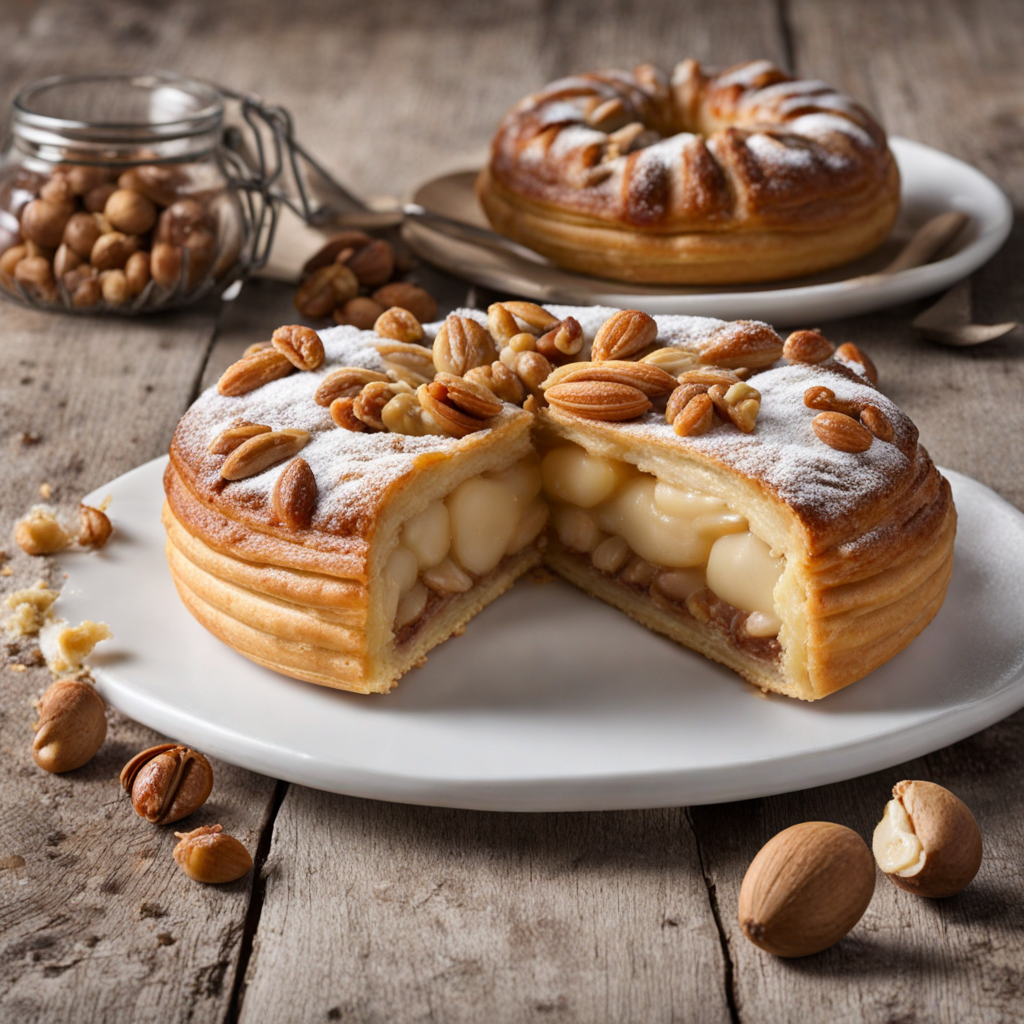Carac
Carac is a delightful Swiss pastry that embodies the charm and creativity of Swiss confectionery. This treat is essentially a chocolate pastry, shaped like a shell, and is filled with a rich, creamy chocolate ganache. The outer crust is made from a buttery, flaky dough that provides a satisfying crunch to complement the smooth, velvety filling. The unique shape and presentation make it not just a treat for the palate but also a feast for the eyes, often adorned with a glossy icing that adds a touch of elegance. The flavor profile of Carac is truly indulgent, with the deep richness of chocolate taking center stage. The ganache filling is typically made from high-quality Swiss chocolate, which is known for its luxurious texture and robust flavor. Some variations may include hints of vanilla or a dash of liqueur, adding complexity to the taste. When you take a bite, the outer crust crumbles gently, giving way to the luscious interior, creating a perfect balance between the crispness of the pastry and the creaminess of the filling. Carac is often enjoyed as a dessert or a sweet snack, making it a versatile addition to any meal. Whether paired with a cup of coffee, tea, or served as part of a festive spread, it brings a taste of Swiss tradition to the table. Each bite is a celebration of Swiss craftsmanship, showcasing the country's dedication to quality ingredients and culinary artistry. For anyone looking to embark on a new gastronomic adventure, Carac offers a delightful journey into the world of Swiss sweets.
How It Became This Dish
The History of Carac: A Swiss Delight #### Origins and Early Beginnings Carac, a sweet pastry from Switzerland, embodies the rich culinary traditions of the Swiss people, particularly in the region of Vaud. Its origins can be traced back to the 19th century, a period when the burgeoning industrial revolution influenced not only the economy but also the gastronomy of Europe. As urban centers grew, so did the demand for convenient yet delicious snacks, and Carac emerged as a delightful answer to this need. The pastry is primarily known for its rich chocolate topping, which is set atop a base of sweet pastry filled with almond paste or a similar almond-flavored filling. The name "Carac" is believed to be derived from the term "caracole," which means snail in French—a nod to its spiral shape often seen in traditional versions. However, it may also be a corruption of "carac," a term related to the region's dialects, signifying a small, unique confection. #### Cultural Significance In Switzerland, Carac is more than just a pastry; it is a symbol of local craftsmanship and culinary pride. Traditionally, these pastries were sold in bakeries and patisseries, where skilled artisans would showcase their talent in both the creation of the pastry and the artistry of its decoration. Each Carac is typically finished with a glossy chocolate glaze and often garnished with a swirl of contrasting colors, showcasing the baker's creativity. The Carac's unique flavor profile—sweet, nutty, and richly chocolatey—made it a beloved treat for people of all ages. It became particularly popular during celebrations and festive occasions, serving as a centerpiece at gatherings. In the 20th century, as Switzerland solidified its identity as a gastronomic hub, the Carac gained a reputation beyond its borders, attracting attention from tourists and food enthusiasts who sought to experience authentic Swiss flavors. #### Development Over Time As the 20th century progressed, Carac evolved along with the changing tastes and preferences of the Swiss people. The post-World War II era brought about a significant shift in dietary habits, with a growing emphasis on convenience foods and mass production. However, the artisanal nature of Carac remained a point of pride for many bakers, who continued to uphold traditional recipes while also experimenting with new flavors and textures. In the 1970s and 1980s, the rise of the health food movement prompted some bakers to adapt the Carac recipe to include healthier ingredients, such as whole grain flours, organic nuts, and reduced sugar. This period also saw the introduction of variations, including fruit-flavored fillings and alternative toppings, catering to a more diverse consumer base. The late 20th and early 21st centuries witnessed a resurgence of interest in artisanal baking, with many young chefs and home bakers seeking to revive traditional Swiss recipes. Carac became a focal point in this movement, as its unique flavor and nostalgic appeal resonated with a new generation. Bakeries began to experiment with innovative presentations, including mini Carac bites and gluten-free versions, ensuring that this beloved pastry could be enjoyed by all. #### Carac Today: A Modern Icon Today, Carac is celebrated not only in Switzerland but also in various parts of Europe and beyond. It remains a staple in Swiss patisseries and is often featured in culinary festivals and events. The pastry reflects the country’s commitment to quality ingredients and meticulous craftsmanship, serving as a testament to the enduring legacy of Swiss baking traditions. In contemporary settings, Carac is often paired with coffee or tea, making it a popular choice for afternoon snacks or dessert. Its aesthetic appeal—gleaming chocolate surfaces adorned with delicate decorations—makes it a favorite among pastry chefs who wish to impress their patrons with both flavor and presentation. Moreover, the rise of social media has played a significant role in promoting Carac to a global audience. Food bloggers and influencers have shared their experiences with this Swiss treat, showcasing its beauty and deliciousness, thereby creating a buzz that transcends geographical boundaries. #### Conclusion: A Culinary Heritage Carac is more than just a pastry; it is a reflection of Switzerland’s rich culinary heritage and cultural identity. From its humble beginnings in the 19th century to its status as a cherished treat today, Carac has undergone many transformations while retaining its core essence. As it continues to evolve with modern tastes and dietary preferences, this delightful confection symbolizes the spirit of Swiss baking: a commitment to quality, creativity, and the celebration of tradition. As we savor the taste of a Carac, we are not only enjoying a delectable dessert but also partaking in a story that has unfolded over generations. It serves as a reminder of the importance of food in connecting us to our past, our culture, and each other—a delicious thread woven into the fabric of Swiss life.
You may like
Discover local flavors from Switzerland







